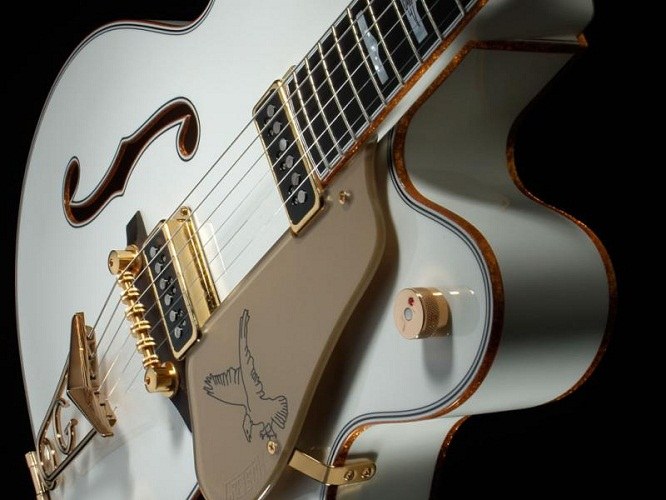Instruction
1
Adjust the height of the strings with a key. How to change the height of the strings relative to the frets depends on the type of guitar. Most acoustic guitars are equipped with special anchor bolt, located at the base of the neck to the outside or inside of the soundboard. Complete such tool is a hex key. To adjust the height of the strings you want to insert a hex driver in the hole and three times to turn it clockwise. Then, check how sound the strings. To do this, pull them up, clamping on the first, fifth, seventh, ninth, twelfth, and really close to the deck fret. If the sound is clear and the strings don't rattle, you can omit them. Continue to rotate hexagon clockwise and check the guitar sound until until you hear the rattling. After that, turn the hexagon counterclockwise one or two times. So you will achieve the pure sound of strings at their closest position relative to the fingerboard.
2
Work with the nut. Classical acoustic guitars are not equipped with bolts. To change the height of the strings they need to change or rasp the bottom nut. Of course, you have to remove the strings. After removing the bottom nut, sawed it with a file with the side surface of which deals with the soundboard, not strings, or replace it with a new lower elevation. If I cut too much, put the nut piece of plastic or hard wood of appropriate thickness. Perhaps, after the change of the height of the strings on these guitars will have to cut or change the frets and deepen the front nut. If you are not confident in their abilities, give the tool a specialist.
3
Use a screwdriver, if possible. For most electric and bass guitars have the option to change the height of the tension of each string separately. To do this, tighten or loosen the screws, located at their base, using a screwdriver.
Note
Anchor rod (anchor guitar) is a metal rod inside the guitar fretboard thickness of about 5-6 mm. At one end of the anchor (and sometimes both) is a bolt with which it is possible to regulate the force of the tension rod. Tension in turn affects the degree of deflection of the fretboard.
Useful advice
That's why it was coined "the anchor", which increases the structural strength of the neck and also allows you to adjust the camber of the fretboard of the guitar. Principal "anchors": 1. Single (classical) – the most common type of anchor rod ,one end of which the adjusting bolt and the other is fixed to the fretboard.
